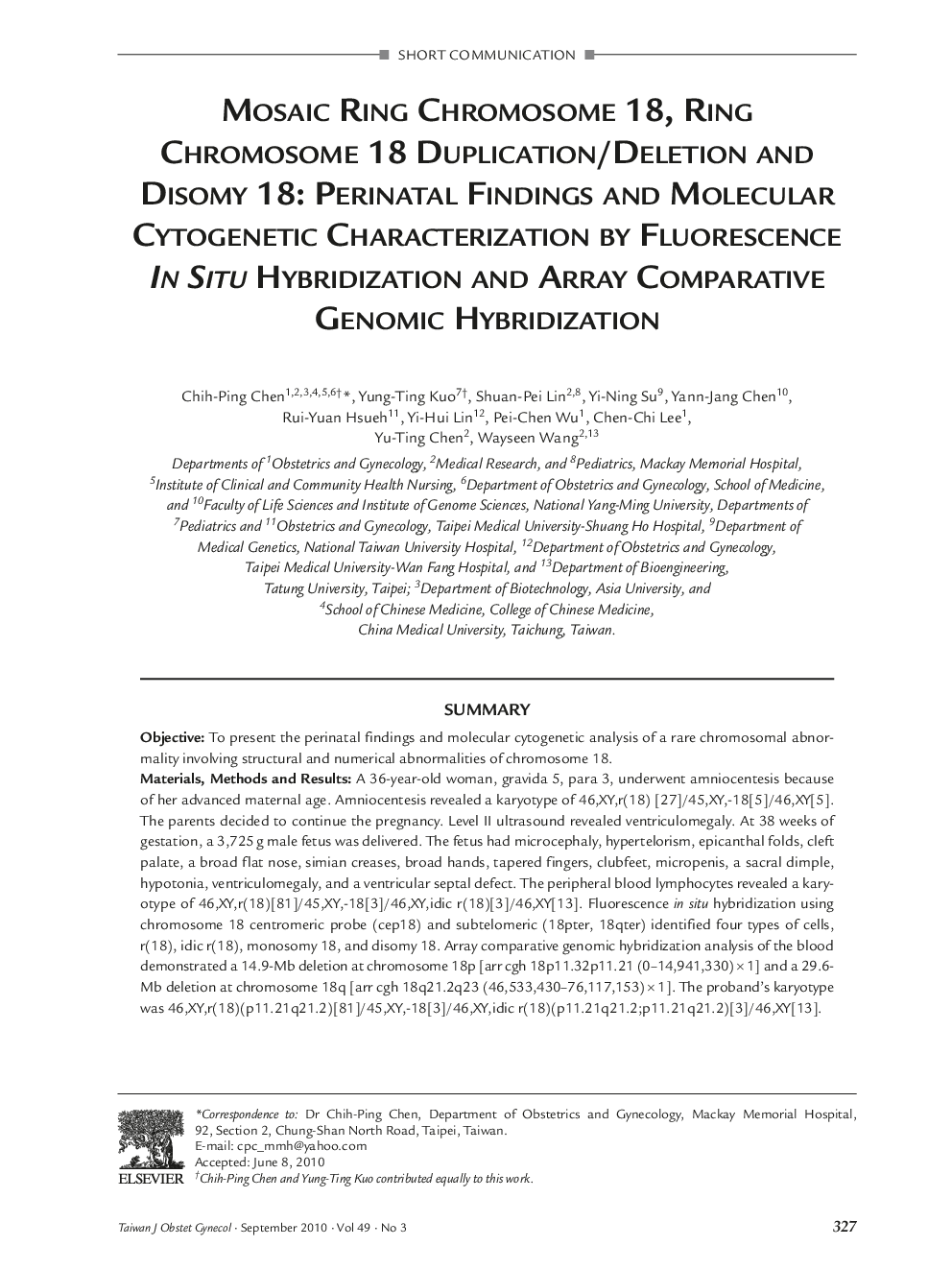| Article ID | Journal | Published Year | Pages | File Type |
|---|---|---|---|---|
| 3975914 | Taiwanese Journal of Obstetrics and Gynecology | 2010 | 6 Pages |
SummaryObjectiveTo present the perinatal findings and molecular cytogenetic analysis of a rare chromosomal abnormality involving structural and numerical abnormalities of chromosome 18.Materials, Methods and ResultsA 36-year-old woman, gravida 5, para 3, underwent amniocentesis because of her advanced maternal age. Amniocentesis revealed a karyotype of 46,XY,r(18) [27]/45,XY,-18[5]/46,XY[5]. The parents decided to continue the pregnancy. Level II ultrasound revealed ventriculomegaly. At 38 weeks of gestation, a 3,725 g male fetus was delivered. The fetus had microcephaly, hypertelorism, epicanthal folds, cleft palate, a broad flat nose, simian creases, broad hands, tapered fingers, clubfeet, micropenis, a sacral dimple, hypotonia, ventriculomegaly, and a ventricular septal defect. The peripheral blood lymphocytes revealed a karyotype of 46,XY,r(18)[81]/45,XY,-18[3]/46,XY,idic r(18)[3]/46,XY[13]. Fluorescence in situ hybridization using chromosome 18 centromeric probe (cep18) and subtelomeric (18pter, 18qter) identified four types of cells, r(18), idic r(18), monosomy 18, and disomy 18. Array comparative genomic hybridization analysis of the blood demonstrated a 14.9-Mb deletion at chromosome 18p [arr cgh 18p11.32p11.21 (0-14,941,330)× 1] and a 29.6-Mb deletion at chromosome 18q [arr cgh 18q21.2q23 (46,533,430-76,117,153) × 1]. The proband's karyotype was 46,XY,r(18)(p11.21q21.2)[81]/45,XY,-18[3]/46,XY,idic r(18)(p11.21q21.2;p11.21q21.2)[3]/46,XY[13].ConclusionArray comparative genomic hybridization is useful to determine the breakpoints of a ring chromosome, particularly in cases where the ring chromosome comprises the majority of the mosaicism.
